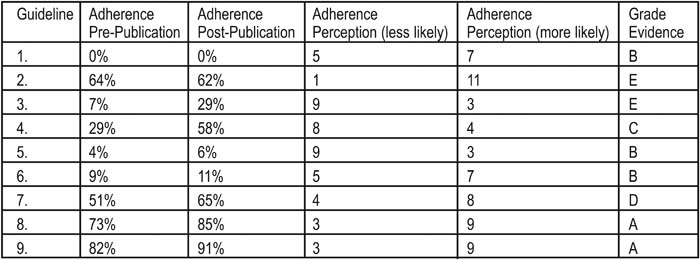Background:
In 2004 The Surviving Sepsis Campaign Guidelines (SSCG) published specific recommendations to establish guidance to clinicians in the management of sepsis. We sought to determine the frequency that our physicians follow practices outlined in the SSCG before and after their publication and we surveyed the physician's own perception of adherence to the guidelines.
Method:
We conducted a retrospective chart review with attention to adherence to selected guidelines on patients admitted with Severe sepsis and Septic shock, one year before and one year after their publication. A concomitant survey was given to emergency department and critical care physician's in order to characterize their personal perception of the guidelines focusing on adherence.
Summary of Results:
The following guidelines where observed: 1. Initial Fluid Therapy, 2. Antibiotics within 1 hour, 3. Use of Arterial Line, 4. Use of Steroids, 5. Use of Drotrecogin alpha, 6. Ventilator Strategy, 7. Tight Glucose Control, 8. Venous Thrombosis Prophylaxis, 9. Stress Ulcer Prophylaxis. A total of 45 patients before and 66 after the publication of the guidelines where evaluated. The Survey was returned by 12 physicians. Pertinent results are as follows:
Statement of Conclusions:
Although it was our impression that these guidelines received wide spread dissemination, nonetheless there was little change in the practice of our physicians. Of concern, adherence did not seem to be related to the grade of evidence and there is a dichotomy between perceived and actual practice, specifically glaring is the recommendation of initial fluid therapy where the majority of the physicians believed that they adhere to the guidelines, but none did. Implementation of these guidelines at a local level represents a challenge and requires both education and monitoring.
Author Disclosure Block:
C. Wade, None; L. Pean, None; J. Hanley, None.

